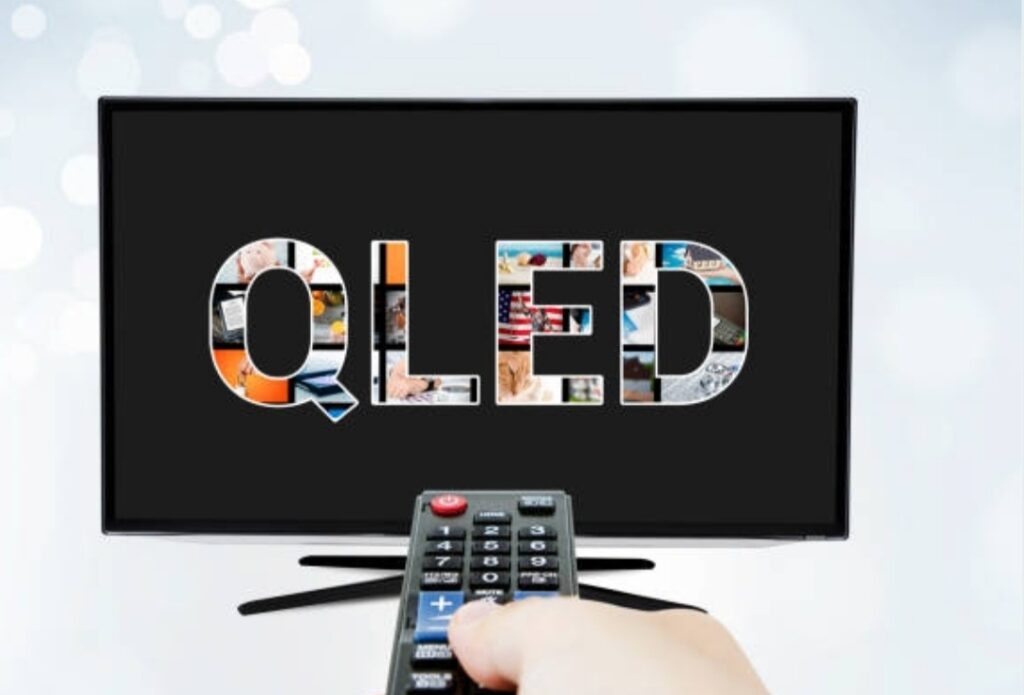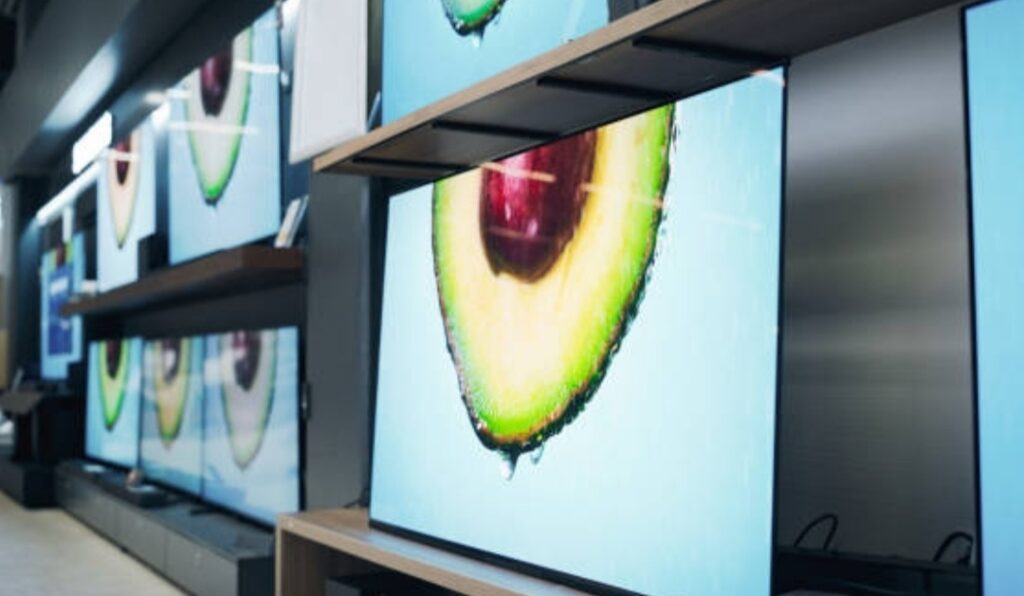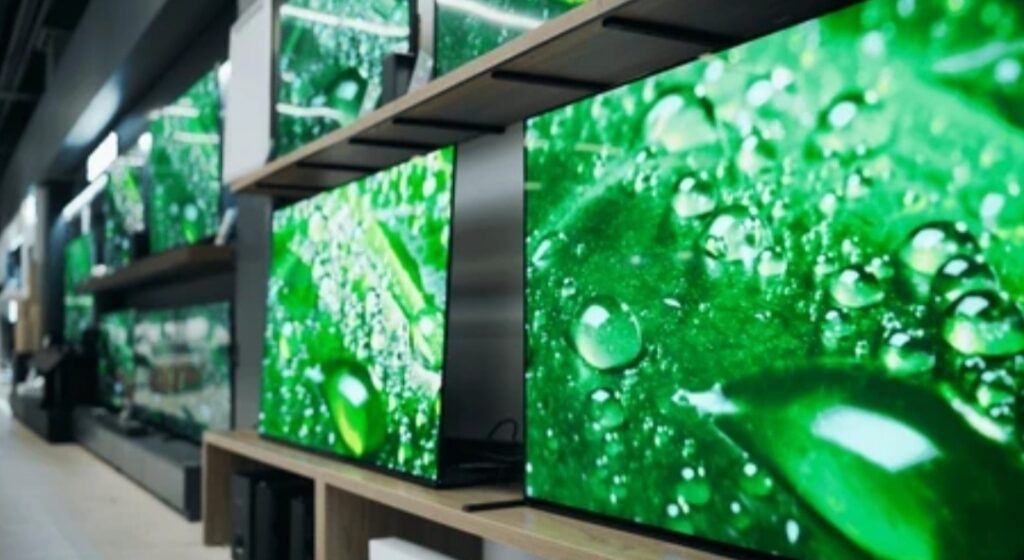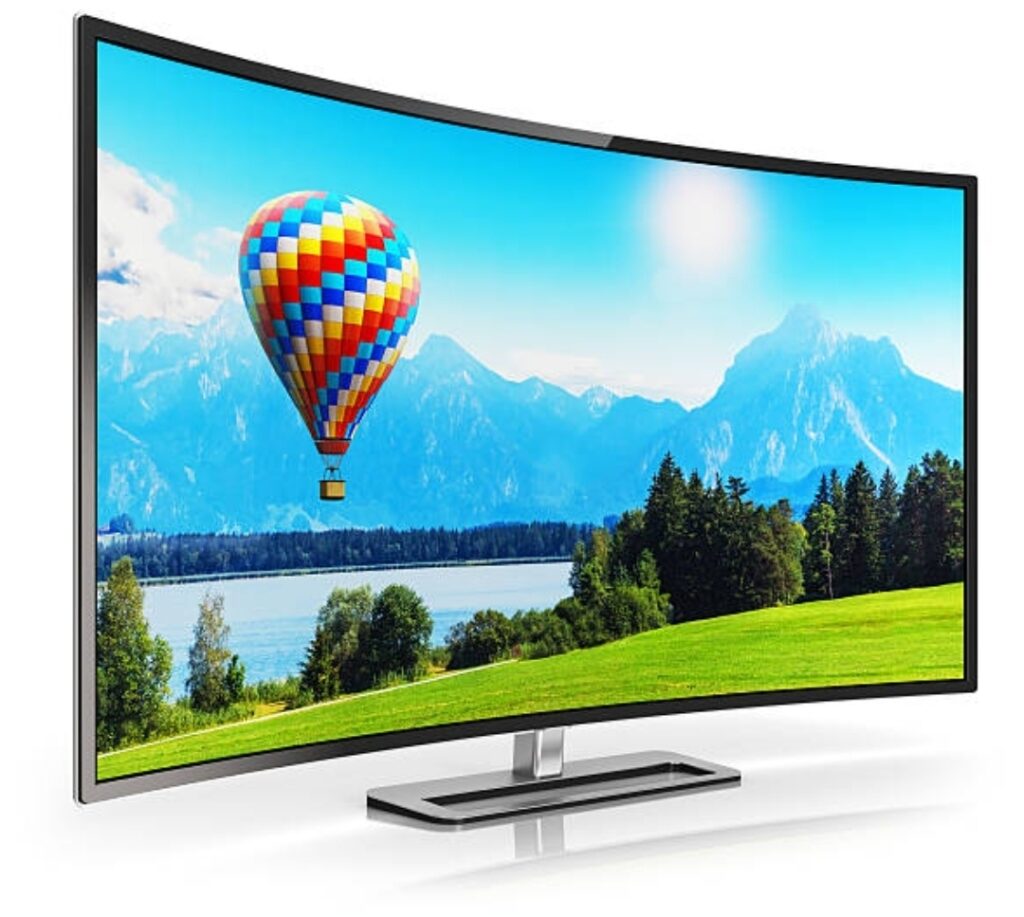A Brief Overview of the Evolution of TV Display Technologies
Television technology has come a long way since the early days of bulky CRT (Cathode Ray Tube) TVs.
From plasma displays to LCD panels, the industry has witnessed massive advancements that have transformed the way we experience content.
In the early 2000s, LCD (Liquid Crystal Display) TVs took over the market, offering a more energy-efficient and lightweight alternative to plasma screens.
However, LCD technology had its own limitations, particularly in terms of black levels, color accuracy, and response times.
This led to the introduction of LED (Light Emitting Diode) TVs, which improved brightness and power efficiency by replacing traditional CCFL (Cold Cathode Fluorescent Lamp) backlights with LEDs.
Even so, LED TVs still relied on backlighting, which meant they could not achieve perfect black levels like their plasma predecessors.
Then came OLED (Organic Light Emitting Diode) technology, a true game-changer in the display industry.
Unlike traditional LCD and LED displays, OLED panels use self-emissive pixels, meaning each pixel can turn on and off independently.
This results in perfect blacks, infinite contrast ratios, and superior color accuracy.

On the other hand, QLED (Quantum Dot Light Emitting Diode) technology was introduced as an enhancement to LED TVs.
Developed primarily by Samsung, QLED panels incorporate quantum dots—tiny semiconductor particles that help produce more vibrant and accurate colors.
Although QLED displays offer higher brightness levels, they still rely on LED backlighting, making it difficult to match OLED’s contrast and black levels.
In 2025, both OLED vs QLED TVs continue to dominate the premium television market, with manufacturers continuously improving their features to enhance picture quality, gaming performance, and energy efficiency.
So, which one is truly the best? Let’s dive deep into the battle between OLED vs QLED to help you decide which TV technology is right for you.
OLED and QLED as the Leading TV Technologies in 2025
In 2025, OLED and QLED TVs remain the top choices for consumers looking for the best picture quality and viewing experience.
However, the competition between OLED vs QLED has never been fiercer, as both technologies continue to evolve.
OLED TVs in 2025: What’s New?
Leading manufacturers like LG, Sony, and Panasonic have introduced brighter OLED panels with better HDR performance.
LG’s latest MLA (Micro Lens Array) OLED technology has significantly increased brightness, addressing one of OLED’s biggest weaknesses—dim images in bright rooms.
Additionally, QD-OLED (Quantum Dot OLED), pioneered by Samsung and Sony, is bridging the gap between OLED and QLED.
By integrating quantum dots with OLED panels, QD-OLED delivers higher brightness, richer colors, and better longevity than traditional OLED screens.
QLED TVs in 2025: What’s New?
Samsung, TCL, and Hisense continue to push QLED technology to new heights.
Newer Mini-LED and Micro-LED backlight technologies have dramatically improved QLED’s black levels, reducing the dreaded “halo” effect around bright objects.
Moreover, Samsung’s Neo QLED and TCL’s OD-Zero Mini LED models have taken brightness to extreme levels, making them ideal for brightly lit rooms and HDR content.
With both OLED and QLED evolving rapidly, it’s now more important than ever to understand their core differences before making a purchase decision.
Why Understanding OLED vs QLED is Essential for Buyers
Choosing between OLED vs QLED is not just about picking the most expensive TV.
It’s about selecting the right display technology based on your viewing habits, room lighting conditions, and personal preferences.
For instance:
✔ Are you a movie lover who enjoys cinematic experiences with deep blacks and accurate colors? → OLED is the better choice.
✔ Do you watch TV in a bright room or need ultra-high brightness for sports and gaming? → QLED is the better choice.
✔ Are you concerned about burn-in issues from static images? → QLED offers better durability.
✔ Do you want the best of both worlds—OLED’s contrast with QLED’s brightness? → QD-OLED is a great middle-ground option.
Making an informed decision about OLED vs QLED can save you money, improve your viewing experience, and ensure your investment lasts for years.
That’s why, in this guide, we will break down every key factor—from picture quality, brightness, color accuracy, durability, gaming performance, and price considerations—to help you pick the best TV technology for your needs.
So, let’s get started with an in-depth comparison of OLED vs QLED! 🔥
Understanding OLED and QLED Technologies
When choosing between OLED vs QLED, it’s essential to understand how each display technology works.
Both OLED and QLED have their own strengths and weaknesses, making them ideal for different types of users.
In this section, we’ll break down how OLED and QLED work, their advantages, and their disadvantages to help you make an informed decision.

What is OLED?
Definition and Working Principle: How OLED Displays Work
OLED (Organic Light Emitting Diode) is a revolutionary display technology that uses self-emissive pixels to produce images.
Unlike traditional LED-LCD TVs, which rely on a backlight, OLED screens have millions of organic pixels that generate their own light.
Each OLED pixel consists of organic compounds that emit light when an electric current passes through them.
This means that each pixel can be turned on or off individually, creating perfect blacks and an infinite contrast ratio.
Since OLED panels do not require a separate backlight, they can be made thinner and more flexible, which is why OLED technology is also used in foldable smartphones, gaming monitors, and high-end TVs.
Advantages of OLED Technology
✅ Perfect Blacks and Infinite Contrast Ratio
One of the biggest advantages of OLED is its ability to achieve true black levels.
Since each pixel can turn off completely, OLED TVs produce deeper blacks and a true-to-life contrast ratio that QLED and LED TVs cannot match.
✅ Wide Viewing Angles Without Color Distortion
OLED panels offer superior viewing angles compared to QLED and LCD TVs.
Even when viewed from extreme side angles, colors remain accurate without the noticeable color shift or brightness loss that occurs with QLED displays.
✅ Fast Response Time and Low Input Lag (Best for Gaming)
Each OLED pixel can turn on and off almost instantly, giving OLED TVs extremely fast response times (as low as 0.1ms).
This makes them perfect for gaming, fast-paced action movies, and sports, reducing motion blur significantly.
✅ True-to-Life Colors and Perfect Uniformity
OLED displays can produce exceptionally accurate colors, making them a top choice for content creators, photographers, and professional video editors.
Since OLED panels have no backlight bleeding, they also offer perfect screen uniformity, eliminating issues like clouding or dirty screen effect.
✅ Ultra-Thin and Flexible Design
Because OLED panels do not require a backlight, they can be extremely thin, even as slim as a few millimeters.
This has led to wallpaper-thin OLED TVs like the LG Signature OLED series, which look stunning when mounted on a wall.
Disadvantages of OLED Technology
❌ Risk of Burn-In With Static Images
One of the most talked-about concerns with OLED TVs is burn-in, which can occur when static images (such as logos, HUD elements in video games, or news tickers) remain on the screen for long periods.
However, modern OLED TVs come with pixel-shifting technology, screen savers, and brightness controls to minimize this risk.
❌ Lower Peak Brightness Compared to QLED
While OLED TVs excel in dark environments, they are generally not as bright as QLED TVs.
This can make OLED displays harder to see in very bright rooms with direct sunlight.
However, QD-OLED and MLA OLED panels (introduced in 2023-2025) have improved brightness levels significantly.
❌ Higher Cost Compared to QLED TVs
Because OLED technology is more expensive to manufacture, OLED TVs tend to be pricier than QLED TVs of the same size.
However, as technology advances, prices have gradually decreased, making OLED TVs more accessible than ever before.

What is QLED?
Definition and Working Principle: How QLED Displays Work
QLED (Quantum Dot Light Emitting Diode) is an advanced LCD-based technology that uses a quantum dot layer to enhance color accuracy and brightness.
Unlike OLED, QLED TVs still require a backlight, typically using Mini-LED or Full-Array Local Dimming (FALD) technology to improve contrast and black levels.
Here’s how QLED works:
1️⃣ A blue LED backlight produces light that passes through a layer of quantum dots.
2️⃣ These quantum dots convert the blue light into precise red and green colors, significantly improving color accuracy.
3️⃣ The enhanced light then passes through an LCD panel, which shapes the final image.
This process allows QLED TVs to deliver higher brightness levels, richer colors, and improved HDR performance, making them ideal for well-lit rooms and HDR content.
Advantages of QLED Technology
✅ Much Higher Peak Brightness Than OLED
QLED TVs can reach brightness levels of 1,500 to 3,000 nits, which is much higher than OLED TVs (700-1,500 nits max).
This makes QLED ideal for bright rooms and daytime viewing.
✅ No Risk of Burn-In (Safer for Long-Term Use)
Since QLED uses LED backlighting instead of self-emissive pixels, there’s no risk of burn-in.
This makes QLED TVs a safer option for people who watch news channels, play video games with HUDs, or use their TV as a PC monitor.
✅ More Affordable Than OLED
In general, QLED TVs are more affordable than OLED TVs, especially in larger screen sizes.
For those who want a big-screen TV without breaking the bank, QLED offers an excellent balance between performance and price.
✅ Vibrant and More Saturated Colors
Thanks to quantum dot technology, QLED TVs can produce wider color gamuts with more vivid, saturated colors.
This makes them great for animated movies, sports, and HDR content.
Disadvantages of QLED Technology
❌ Inferior Black Levels and Contrast Compared to OLED
Since QLED TVs still rely on a backlight, they cannot turn pixels completely off.
Even with Full-Array Local Dimming (FALD) or Mini-LED backlighting, QLED TVs struggle to produce true blacks, leading to a slight grayish haze in dark scenes.
❌ Limited Viewing Angles
Unlike OLED panels, QLED TVs have narrower viewing angles.
Colors and brightness tend to shift when viewed from the sides, which can be noticeable on large-screen TVs.
Some high-end QLED models use special anti-reflection coatings to improve this, but they still don’t match OLED’s near-perfect viewing angles.
❌ Light Bleed and Halo Effect in Dark Scenes
Since QLED TVs use a backlight, they often suffer from light bleed, where bright objects can cause a halo effect in dark scenes.
This is particularly noticeable in HDR content when viewing stars in a night sky or subtitles in a dark movie scene.
OLED vs QLED – Which One Should You Choose?
Both OLED and QLED TVs have their own strengths and weaknesses, making them suitable for different needs.
If you want the best picture quality, perfect blacks, and cinematic visuals, OLED is the superior choice.
If you need higher brightness, better affordability, and no risk of burn-in, QLED is the better option.
But what about QD-OLED, Micro-LED, and Mini-LED?
Key Differences Between OLED and QLED
When comparing OLED vs QLED, it’s crucial to understand their key differences in picture quality, viewing angles, response time, and durability.
Both technologies offer unique advantages, making them suitable for different viewing preferences, lighting conditions, and content types.
Let’s break down these differences in detail so you can make an informed decision when choosing your next TV.

Picture Quality – Which Technology Delivers the Best Visual Experience?
Picture quality is one of the most critical factors when choosing between OLED and QLED TVs.
Here’s how they compare in terms of black levels, brightness, and color accuracy.
Black Levels and Contrast Ratio – OLED’s Perfect Blacks vs. QLED’s Backlight Dependence
✅ OLED: The King of Black Levels and Infinite Contrast
- OLED panels achieve true blacks by turning off individual pixels.
- This results in an infinite contrast ratio, making dark scenes in movies and TV shows look stunningly realistic.
- Because there is no backlight, there’s zero light bleed, ensuring perfect shadow details.
❌ QLED: Superior to Traditional LED-LCDs, But Still Limited
- QLED TVs rely on LED backlighting, which means pixels cannot turn off completely.
- Even with Full-Array Local Dimming (FALD) and Mini-LED backlighting, QLED struggles to produce true black levels.
- Some high-end QLED models improve black levels using advanced dimming algorithms, but they still cannot match OLED’s perfect blacks.
🏆 Winner: OLED – If you prioritize deep blacks and high contrast, OLED is the better choice.
Brightness – Which TV Performs Better in Well-Lit Rooms?
✅ QLED: Higher Peak Brightness for Bright Rooms
- QLED TVs can achieve peak brightness levels of 1,500 to 3,000 nits, making them ideal for sunlit rooms and HDR content.
- Quantum dots enhance color saturation at higher brightness levels, maintaining vibrant and punchy visuals.
- Some premium QLED models use Mini-LED backlights, further boosting brightness control and local dimming performance.
❌ OLED: Lower Peak Brightness but More Controlled Highlights
- OLED TVs have a lower peak brightness, typically ranging between 700 and 1,500 nits.
- However, OLED’s pixel-level brightness control ensures more precise HDR highlights, delivering better cinematic realism.
- Newer OLED technologies, like QD-OLED and MLA OLED, have significantly improved brightness, but they still can’t reach QLED’s peak levels.
🏆 Winner: QLED – If you need a TV for bright rooms, QLED’s higher peak brightness is the better choice.
Color Accuracy and Volume – Which TV Produces More Realistic Colors?
✅ QLED: Vibrant and Saturated Colors with Quantum Dots
- Quantum dots allow QLED TVs to achieve a wider color gamut, making colors appear more saturated and intense.
- High-end QLED models cover nearly 100% of the DCI-P3 color space, making them great for HDR content.
✅ OLED: Natural Color Accuracy and Perfect Uniformity
- OLED displays are known for their superior color accuracy, making them the preferred choice for professional video editors and photographers.
- Since OLED pixels emit their own light, colors remain consistent across the entire screen, ensuring perfect uniformity.
🏆 Winner: Tie – QLED excels in vibrant, high-saturation colors, while OLED delivers unmatched color accuracy and uniformity.

Viewing Angles – Which TV Looks Better from the Side?
✅ OLED: Superior Viewing Angles Without Color Shift
- OLED TVs offer nearly perfect viewing angles, meaning colors and contrast remain consistent even when viewed from the sides.
- This makes OLED the best choice for home theaters, where multiple people watch from different angles.
❌ QLED: Limited Viewing Angles with Potential Color Shift
- QLED TVs tend to lose color accuracy and contrast when viewed from extreme angles.
- Some premium QLED models use special anti-glare coatings, but they still can’t match OLED’s wide viewing angles.
🏆 Winner: OLED – If you watch TV from different angles, OLED ensures the best picture quality from any position.
Response Time and Refresh Rate – Best for Gaming and Fast-Paced Content
✅ OLED: Lightning-Fast Response Times for Gaming
- OLED panels have a response time of 0.1ms, making them ideal for fast-paced action scenes and gaming.
- Many OLED TVs now support 120Hz refresh rates, VRR (Variable Refresh Rate), and NVIDIA G-Sync, reducing motion blur and screen tearing.
❌ QLED: Decent Response Time, But Can Vary by Model
- QLED TVs have a slower response time (2-10ms), which may cause motion blur in fast-moving content.
- However, high-end QLED gaming TVs now offer 120Hz and 144Hz refresh rates, closing the gap with OLED.
🏆 Winner: OLED – For serious gamers, OLED’s instant response time and low input lag give it the edge.
Durability and Lifespan – Which TV Lasts Longer?
✅ QLED: No Risk of Burn-In and Longer Lifespan
- QLED TVs do not suffer from burn-in, making them a safer long-term investment.
- Since they use LED backlighting, QLED panels typically last 100,000+ hours, making them more durable than OLED.
❌ OLED: Susceptible to Burn-In, But With Precautions
- OLED screens can develop burn-in if static images (like TV logos or HUD elements) remain on the screen for extended periods.
- However, modern OLED TVs come with screen savers, pixel refreshers, and logo dimming features to minimize this risk.
- Newer OLED technologies, like LG’s WOLED and Samsung’s QD-OLED, have improved burn-in resistance, making it less of a concern.
🏆 Winner: QLED – If you plan to use your TV for news channels, gaming HUDs, or static content, QLED is the safer long-term option.
Final Verdict: OLED vs QLED – Which One Should You Choose?
✅ Choose OLED if you want:
- The best black levels and infinite contrast
- Superior viewing angles
- Faster response times for gaming
- Perfect color accuracy and uniformity
✅ Choose QLED if you want:
- Higher brightness for well-lit rooms
- More vibrant, saturated colors for HDR content
- A longer lifespan with no risk of burn-in
- A more affordable alternative to OLED in larger sizes
Still unsure? Click here to check the latest prices on OLED TVs and QLED TVs now!
Recent Developments in OLED and QLED Technologies
In the ever-evolving landscape of television display technologies, OLED and QLED have been at the forefront, continually pushing the boundaries of visual excellence.
As of 2025, both technologies have seen significant advancements, each offering unique enhancements that cater to diverse viewer preferences.

Advancements in OLED
Introduction of LG’s Transparent OLED TVs
LG has unveiled its groundbreaking transparent OLED TV, a 77-inch marvel that, when powered off, becomes nearly invisible except for its frame.
This innovation not only offers a futuristic aesthetic but also opens up new possibilities for interior design and space utilization, seamlessly blending into any environment.
Enhancements in Brightness and Energy Efficiency
LG Display has introduced its fourth-generation OLED TV panel, achieving a maximum brightness of 4,000 nits, a 33% increase over previous models.
This leap in brightness ensures vivid visuals even in well-lit rooms.
Additionally, the new panel boasts a 40% improvement in color brightness, enhancing color accuracy and vibrancy.
These advancements are achieved without compromising energy efficiency, maintaining OLED’s reputation for delivering stunning visuals with optimal power consumption.
Advancements in QLED
Samsung’s Development of QD-OLED
Samsung has introduced its Vision AI technology, integrated across its latest OLED and Neo QLED TVs.
This AI-driven approach personalizes the viewing experience by adapting picture and sound settings in real-time, ensuring optimal performance based on content and ambient conditions.
This fusion of quantum dots with OLED technology results in enhanced brightness, improved color accuracy, and deeper blacks, offering viewers a more immersive experience.
Increased Brightness Levels and Color Accuracy in Recent Models
Samsung’s 2025 Neo QLED lineup features models with refresh rates up to 165Hz, catering to gamers and fast-action content enthusiasts.
These advancements ensure smoother motion handling and reduced blur, enhancing the overall viewing experience.
OLED vs QLED: Which is Right for You?
When deciding between OLED and QLED, consider the following factors:
- Viewing Environment: If you often watch TV in a dark room and prioritize deep blacks and infinite contrast, OLED may be the better choice. Conversely, if you watch in well-lit rooms and require higher brightness levels, QLED could be more suitable.
- Usage Patterns: For static content like gaming HUDs or news channels, QLED’s resistance to burn-in offers an advantage. However, for cinematic experiences with rich color accuracy, OLED excels.
- Budget Considerations: QLED TVs generally offer a more affordable price point, while OLED TVs, with their superior picture quality, come at a premium.
Both OLED and QLED technologies have made remarkable strides in 2025, each presenting unique strengths.
Your choice between the two should align with your viewing habits, environmental conditions, and personal preferences.
Staying informed about these advancements will empower you to make a decision that best suits your entertainment needs.
Use Cases: Which Technology Suits Your Needs?
Choosing between OLED vs QLED can be challenging, as both technologies offer unique advantages suited for different viewing needs.\
Whether you’re a movie enthusiast, a gamer, or someone who watches TV in a brightly lit room, understanding which display technology fits your lifestyle is crucial.
Below, we’ll break down the ideal use cases for OLED vs QLED, helping you make an informed decision based on your specific needs.

Home Theater Enthusiasts – OLED for the Ultimate Cinematic Experience
If you want a true home theater experience, OLED is the superior choice due to its:
- Perfect black levels – OLED TVs can turn off individual pixels completely, achieving true black with infinite contrast.
- Superior contrast ratio – This makes darker scenes in movies look stunning, with incredible depth and detail.
- Cinematic color accuracy – OLED panels deliver accurate and natural colors, perfect for watching movies as directors intended.
Why OLED is Ideal for Home Theaters
For home theater enthusiasts who love watching HDR movies, streaming 4K content, or enjoying Blu-rays, an OLED TV creates an immersive viewing experience.
Unlike QLED, which relies on a backlight (causing light bleed), OLED’s pixel-level control results in a more realistic and visually stunning image.
If your priority is movie night perfection, OLED is the best display technology to invest in.
Bright Room Viewing – QLED’s Superior Brightness for Well-Lit Spaces
If you often watch TV during the daytime or in a bright living room with lots of natural light, QLED is the better choice.
Why QLED Excels in Bright Rooms
- Higher peak brightness – QLED TVs can reach over 2,000 nits of brightness, making them ideal for well-lit rooms.
- Better anti-glare technology – Newer QLED models feature anti-reflection coatings, reducing glare from windows and lights.
- Vibrant colors in any lighting – Quantum dots ensure colors remain rich and vivid, even in bright environments.
OLED vs QLED for Bright Room Viewing
OLED struggles with peak brightness, meaning it may not look as vivid in a well-lit space.
QLED’s superior brightness and anti-glare properties make it the better option if you mostly watch TV during the day or in a room with multiple light sources.
Gaming – OLED’s Lightning-Fast Response Time for Competitive Gamers
If you’re a serious gamer, you need a display that delivers fast response times, high refresh rates, and low input lag—all areas where OLED shines.
Why OLED is the Best Choice for Gamers
- Near-instantaneous response time – OLED pixels switch on and off almost instantly (0.1ms response time), eliminating motion blur.
- Low input lag – With input lag as low as 1ms, OLED provides a responsive gaming experience.
- Perfect blacks for immersive gaming – Games with dark scenes (like horror or stealth games) look better due to OLED’s infinite contrast.
- Supports 120Hz & VRR – Modern OLED TVs support 120Hz refresh rates, NVIDIA G-Sync, and AMD FreeSync, making gameplay smoother and tear-free.
Best OLED TVs for Gaming
If you’re a PlayStation 5, Xbox Series X, or PC gamer, OLED is the best choice, delivering fast-paced action with no motion blur.
However, if you play games with static HUDs (like sports games or RPGs), be mindful of potential burn-in issues.

General TV Viewing – QLED’s Durability and Versatility for Everyday Use
If you’re looking for a family-friendly, all-purpose TV that handles a mix of content like news, sports, movies, and streaming, QLED is a great option.
Why QLED is Ideal for Everyday Viewing
- Longer lifespan – QLEDs are more resistant to burn-in, making them great for long hours of watching.
- Excellent brightness – Whether watching daytime talk shows or nighttime movies, QLED performs well in all conditions.
- Better durability – QLEDs tend to have a longer lifespan compared to OLED.
OLED vs QLED for General Use
If you’re concerned about burn-in, durability, or just want a worry-free TV, QLED is the more practical choice for daily viewing.
Which One Should You Buy?
When deciding between OLED vs QLED, consider your viewing habits, environment, and personal preferences.
- Choose OLED if: You want the best picture quality for movies and gaming, with deep blacks, high contrast, and ultra-fast response times.
- Choose QLED if: You need a brighter display for a well-lit room, a durable TV for general use, and resistance to burn-in.
👉 Check the latest OLED and QLED TV deals here to find the best prices for your next upgrade!
Price Considerations – OLED vs QLED: Which One Offers Better Value?
When comparing OLED vs QLED, price is a crucial factor for many buyers.
While both technologies offer high-end viewing experiences, there are significant differences in cost due to their manufacturing processes, panel technology, and market positioning.
In this section, we’ll break down the pricing trends of OLED vs QLED TVs, helping you determine which one offers the best value for your budget.

OLED Pricing – Why Are OLED TVs More Expensive?
OLED TVs are known for their premium picture quality, but this comes at a higher cost due to several factors:
1. Expensive Manufacturing Process
OLED (Organic Light-Emitting Diode) panels use self-emissive pixels, meaning each pixel generates its own light.
This technology is more complex and costly to manufacture than QLED, which relies on LED backlighting.
2. Limited Panel Production
Unlike QLED, which is widely produced by multiple brands, OLED panels are primarily manufactured by LG Display and supplied to brands like Sony, Philips, and Panasonic.
This limited production contributes to higher costs.
3. Premium Features
Most OLED TVs come with high-end features, such as:
- 4K and 8K resolution
- Dolby Vision and HDR support
- Ultra-thin designs with premium build quality
These advanced features drive up OLED TV prices, making them more expensive than QLED models with similar screen sizes.
4. Price Range of OLED TVs
- Entry-Level OLED TVs (Small screens, fewer features): $1,000 – $1,500
- Mid-Range OLED TVs (Better brightness, gaming features): $1,500 – $2,500
- Premium OLED TVs (Best picture quality, top-tier models): $2,500 – $4,000+
👉 Find the best deals on OLED TVs here to get premium picture quality at the best price!

QLED Pricing – More Affordable and Budget-Friendly Options
QLED (Quantum Dot LED) TVs are generally more affordable than OLED, making them a better choice for budget-conscious buyers.
1. Cost-Effective Manufacturing
QLED uses LED-backlit panels with quantum dots, which are easier and cheaper to produce compared to OLED’s organic pixel technology.
Since Samsung, TCL, Hisense, and other brands manufacture QLED TVs, competition keeps prices more budget-friendly.
2. Wide Range of Price Points
QLED TVs come in various price ranges, making them accessible to both budget shoppers and premium buyers.
- Entry-Level QLED TVs (Good quality, no premium features): $500 – $1,000
- Mid-Range QLED TVs (Better brightness, better HDR performance): $1,000 – $1,800
- High-End QLED TVs (Flagship models with Mini-LED, 8K, best features): $2,000 – $3,500+
3. Best Value for Money?
If you want a great TV without breaking the bank, QLED is a better value than OLED, especially for bright rooms and general TV viewing.
👉 Check out the latest QLED TV discounts here to find the perfect balance between price and performance!
Which One Should You Buy?
When choosing between OLED vs QLED based on price, consider:
- Choose OLED if you want the best picture quality and are willing to pay a premium for deep blacks and perfect contrast.
- Choose QLED if you want a more budget-friendly option with high brightness, vibrant colors, and better durability.
For budget shoppers, QLED provides more affordable choices without sacrificing too much picture quality.
However, if you prioritize top-tier performance, investing in OLED is worth it.
👉 Looking for the best TV deals? Compare OLED and QLED prices here and grab the best discounts!
FAQs – Answering Your Most Common Questions About OLED vs QLED
When choosing between OLED vs QLED, many buyers have important questions about picture quality, durability, price, and long-term value.
Below, we’ll answer the most frequently asked questions (FAQs) to help you make an informed decision.

1. Which is better for picture quality: OLED or QLED?
If picture quality is your top priority, OLED is the superior choice.
Since OLED panels have self-emissive pixels, they can turn off individually, producing perfect black levels and infinite contrast.
Advantages of OLED in Picture Quality:
✔️ True blacks with no backlight bleed
✔️ Infinite contrast ratio for stunning visuals
✔️ Better viewing angles with no color distortion
✔️ Vibrant colors with HDR performance
However, QLED also offers excellent picture quality, especially in bright rooms,.
Since QLED TVs have a high brightness output, they perform better in well-lit environments where reflections might affect OLED screens.
Advantages of QLED in Picture Quality:
✔️ Higher brightness levels, ideal for daylight viewing
✔️ Vibrant colors with quantum dot technology
✔️ No risk of burn-in, making it more durable
🔹 Verdict: If you want the best possible image quality and cinematic contrast, go for OLED.
If you watch TV in a bright room and need higher brightness, QLED is the better choice.
2. Does OLED last longer than QLED?
QLED TVs generally have a longer lifespan because they use LED backlighting, which is known for its durability.
On the other hand, OLED panels use organic materials, which degrade over time.
👉 OLED lifespan: Around 30,000 – 50,000 hours of use (~10+ years with moderate usage).
👉 QLED lifespan: Can last 60,000 – 100,000 hours, making it a longer-lasting option.
That said, OLED longevity has improved in recent years, and for regular users, an OLED TV will likely last a decade or more before showing any signs of degradation.
3. Can OLED TVs suffer from burn-in?
Yes, OLED TVs are susceptible to burn-in, but this is rare in normal usage.
What is burn-in?
Burn-in occurs when static images (like logos, news tickers, or game HUDs) are displayed for extended periods, causing them to leave a permanent ghost image on the screen.
How to Prevent OLED Burn-In:
✔️ Avoid keeping static images on the screen for hours.
✔️ Enable built-in screen savers and pixel refreshers (most OLED TVs have this feature).
✔️ Vary your content (don’t only watch one channel with static logos).
For casual TV viewers, movie lovers, and gamers who rotate content, burn-in should not be a major concern.
🔹 Verdict: If you watch a variety of content, burn-in is unlikely to be an issue.
However, if you plan to use your TV as a static display (for example, as a menu board or for stock charts), QLED is a safer choice.

4. Which is better for gaming: OLED or QLED?
For serious gamers, OLED is the best choice due to its instant response time and low input lag.
Why OLED is Better for Gaming:
🎮 Fast response times (~0.1ms), eliminating motion blur
🎮 Lower input lag, making controls feel more responsive
🎮 Perfect blacks, enhancing dark scenes in games
Why QLED is Still a Good Gaming Option:
🟢 Higher brightness, making it easier to see in bright rooms
🟢 No risk of burn-in, so you can play long gaming sessions worry-free
🟢 Great HDR performance, delivering stunning visuals in modern games
🔹 Verdict: If you want the fastest response times and best contrast, OLED is the best gaming TV.
If you need higher brightness and worry-free durability, QLED is still a great option.
5. Is OLED worth the extra cost?
✅ If you want the best picture quality, deep blacks, and a cinematic experience, OLED is worth it.
❌ If you want a budget-friendly TV that still delivers great performance, QLED offers better value for money.
For buyers who prioritize picture quality over everything else, OLED is an investment worth making.
However, if you’re looking for the best bang for your buck, QLED is the better value option.
6. Should I buy an OLED or QLED TV for my living room?
It depends on your viewing environment and usage habits.
- If your living room is bright with a lot of sunlight, QLED is better because it has higher brightness levels and better visibility.
- If you mostly watch TV at night or in a controlled lighting environment, OLED is the better option for superior contrast and deeper blacks.
🔹 Verdict: Choose OLED for dark-room viewing and QLED for bright-room performance.

7. Do OLED TVs consume more power than QLED?
Yes, OLED TVs generally consume more power when displaying bright images because each pixel generates its own light.
However, when showing dark scenes, OLED can use less power than QLED because it turns off individual pixels completely.
QLED, on the other hand, uses a consistent backlight, which means power consumption is more stable but higher on average compared to OLED.
🔹 Verdict: If energy efficiency is a major concern, OLED is better for dark scenes, while QLED is more stable overall.
8. Are QLED and OLED the only premium TV options?
No, apart from OLED vs QLED, there are other high-end display technologies like:
🔸 MicroLED TVs – Offers the benefits of OLED (self-emissive pixels) but with higher brightness and no burn-in risk.
🔸 Mini-LED TVs – A step up from QLED, with better local dimming for improved contrast.
🔸 Plasma TVs (Discontinued) – Once popular but replaced by OLED and QLED.
If you want the absolute best TV tech, MicroLED TVs are the future, but they are extremely expensive right now.
Which TV Should You Buy?
When deciding between OLED vs QLED, the best choice depends on your budget, viewing habits, and priorities.
Choose OLED If:
✔️ You want the best picture quality and perfect black levels.
✔️ You mostly watch movies in a dark room.
✔️ You’re a serious gamer who values low input lag and fast response times.
Choose QLED If:
✔️ You need higher brightness for a bright room.
✔️ You want a longer-lasting TV with no risk of burn-in.
✔️ You prefer a more budget-friendly option.
👉 Looking for the best OLED and QLED TV deals? Click here to compare top-rated models and find the perfect TV for your needs!
Conclusion – Which TV Technology is Right for You?
Choosing between OLED vs QLED can be challenging, especially with both technologies offering exceptional picture quality, innovative features, and unique advantages.
To make the best decision, it’s essential to weigh the strengths and weaknesses of each technology and align them with your viewing habits, environment, and personal preferences.

Strengths and Weaknesses of OLED vs QLED
Both OLED and QLED TVs have their own set of advantages and drawbacks.
Let’s break them down to help you decide which one is best for your needs.
Strengths of OLED TVs
✅ Perfect Black Levels & Infinite Contrast – Each pixel can turn off completely, producing true blacks and incredible contrast.
✅ Superior Picture Quality in Dark Rooms – Ideal for home theaters and nighttime viewing.
✅ Wider Viewing Angles – Colors and contrast remain consistent even when viewed from the sides.
✅ Faster Response Time & Low Input Lag – Excellent for gaming, offering near-instant pixel response and smooth gameplay.
✅ Thinner, Lightweight Design – Since OLED panels don’t require a backlight, they are super slim and aesthetically pleasing.
Weaknesses of OLED TVs
❌ Lower Peak Brightness – Not as bright as QLED, which makes it less ideal for sunlit rooms.
❌ Risk of Burn-In – Static images (like news tickers and game HUDs) can cause permanent image retention over time.
❌ Higher Price Tag – Premium OLED TVs are more expensive compared to QLED alternatives.
Strengths of QLED TVs
✅ Higher Brightness Levels – Quantum dots allow QLED TVs to reach higher peak brightness, making them great for bright rooms.
✅ No Risk of Burn-In – Perfect for those who watch channels with static logos or play games with HUD elements for hours.
✅ More Affordable Options – You can find budget-friendly QLED TVs with impressive picture quality.
✅ Vibrant Colors & HDR Performance – Quantum dots enhance color accuracy and make HDR content look stunning.
Weaknesses of QLED TVs
❌ Inferior Black Levels & Contrast – Since QLED uses a backlight, it can’t achieve true blacks like OLED.
❌ Limited Viewing Angles – Colors and brightness may shift when viewed from the sides.
❌ Slower Response Time – Not as fast as OLED, which may result in slight motion blur in fast-paced scenes.
Matching the Right TV with Your Viewing Preferences
When choosing between OLED vs QLED, consider how, when, and where you’ll be using your TV.
Best Choice for Movie Lovers & Home Theater Setups
🏆 Winner: OLED
- If you want cinematic picture quality, deep blacks, and an immersive home theater experience, OLED is the ultimate choice.
- Its perfect contrast and wide viewing angles make it ideal for watching movies in a dark room.
Best Choice for Gamers
🎮 Winner: OLED (for competitive gaming) | QLED (for casual gaming)
- OLED offers faster response times and lower input lag, making it the best option for serious gamers.
- If you’re a casual gamer who plays for long hours and worries about burn-in, QLED is the safer option.
Best Choice for Bright Living Rooms & Daytime Viewing
☀️ Winner: QLED
- If your TV is placed in a bright room or near windows with lots of sunlight, QLED’s higher brightness levels will offer better visibility.
Best Choice for Long-Term Durability
⏳ Winner: QLED
- Since QLED TVs don’t suffer from burn-in, they tend to last longer with fewer maintenance concerns.
Best Choice for Budget-Conscious Buyers
💰 Winner: QLED
- If you want good picture quality without breaking the bank, QLED offers more affordable models compared to OLED.

Final Verdict – Which TV Should You Buy?
There is no one-size-fits-all answer when it comes to OLED vs QLED.
The best TV for you depends on your budget, viewing environment, and personal preferences.
Choose OLED If:
✔️ You want the best picture quality with true blacks and infinite contrast.
✔️ You watch movies in a dark room and want a home theater experience.
✔️ You’re a serious gamer who values fast response times and fluid gameplay.
Choose QLED If:
✔️ You watch TV in a bright room with a lot of sunlight.
✔️ You need a more durable TV without worrying about burn-in.
✔️ You’re looking for a more budget-friendly option with great color and brightness.
👉 Ready to buy? Check out the best deals on OLED and QLED TVs here and find the perfect TV for your needs!
You might also like :

